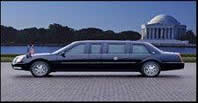| |
|
| |
By The Numbers |
 |
Around 36 lakh applications were received from candidates for the Clerks post of SBI Exam which is a record in itself.
|
|
|
| |
Exams alert |
 |
The Indian Institutes of Management will conduct Common Admission Test (CAT) during a 20 day testing window between 27th Oct 2010 and 24th Nov 2010. |
|
|
|
| |
Thus Spake |
 |
Striving for success without hard work is like trying to harvest where you haven't planted |
- David Bly |
|
|
|
| |
 |
|
|
Interesting Facts |
|
|
|
|
| |
The shadow bird always builds a 3-room nest. The third section is the nursery; the second is a pantry; and in the first, the male parent stands guard against intruders. |
|
| |
|
|
|
| |
Did you know |
|
|
| |
Curiosities about tears: Tears seem less interesting, but in reality are an important part of human body. |
|
| |
|
|
|
|
|
Wireless USB |
|
|
|
Introduction |
|
|
|
|
|
Wireless USB is a short-range, high-bandwidth wireless radio communication protocol created by the Wireless USB Promoter Group. |
|
|
|
|
|
|
|
|
|
Smile Please..! |
|
Don't be on this flight |
| |
This is Captain Sinclair speaking. On behalf of my crew I'd like to welcome you aboard British Airways flight 602 from New York to London. We are currently flying at a height of 35,000 feet midway across the Atlantic.
"If you look out of the windows on the starboard side of the aircraft, you will observe that both the starboard engines are on fire.
"If you look out of the windows on the port side, you will observe that the port wing has fallen off."
If you look down towards the Atlantic ocean, you will see a little yellow life raft with three people in it waving at you.
"That's me your captain, the co-pilot, and one of the air stewardesses. This is a recorded message. Have a good flight!"
|
|
|
|
| |
| |
|
|
|
|
|
|
|
From The Editors Desk |
| |
Heartiest Greetings!
In this issue of Youniverse, we have presented an article on “Wireless USB”. The article provides an overview of this upcoming latest technology that is all set to revolutionize the world of IT with its sheer advantages and simplicity of use.
Our regular section on “Exam Alerts” informs you of the important dates of the upcoming entrance examinations. The section on “Complex simplicities” explains selected tech jargons and their meaning every month.
|
|
| |
Complex Simplicities |
|
Document Management System (DMS)
|
|
|
Document Management System (DMS) is a computer system (or set of computer programs) used to track and store electronic documents and/or images of paper documents. The term has some overlap with the concepts of content management systems. It is often viewed as a component of enterprise content management (ECM) systems and related to digital asset management, document imaging, workflow systems and records management systems.
|
|
|
Wireless Sensor Network |
|
|
Wireless Sensor Network (WSN) consists of spatially distributed autonomous sensors to cooperatively monitor physical or environmental conditions, such as temperature, sound, vibration, pressure, motion or pollutants. The development of wireless sensor networks was motivated by military applications such as battlefield surveillance. |
|
|
|
| |
| |
| |
| |
| |
| |
| |
| |
| |
| |
| |
| |
| |
| |
|
|
| |
| |
| |
| |
| |
| |
| |
| |
| |
| |
| |
|
|
| |
Interesting Facts |
| |
|
|
|
|
|
The shadow bird always builds a 3-room nest. The third section is the nursery; the second is a pantry; and in the first, the male parent stands guard against intruders. |
|
| |
|
|
|
There are only four words in the English language which end in “dous”: tremendous, horrendous, stupendous and hazardous. |
|
|
|
|
|
Post-It Notes, which are adhesive notes, were invented while looking for a way to improve the acrylate adhesive found in tapes. |
|
|
|
|
|
The fastest dog, the greyhound, can reach speeds of upto 41.7 miles per hour. The breed was known to exist in ancient Egypt 6,000 years ago. |
|
|
|
|
|
The first owner of the Marlboro cigarette Company died of lung cancer |
|
|
|
|
|
Pea crabs (the size of a pea) are the smallest crabs in the world. |
|
|
|
|
|
Small-time gamblers who place small bet in order to prolong the excitement of a game are called "dead fish" by game operators because the longer the playing time, the greater the chances of losing. |
|
|
|
|
|
The $ sign was designed in 1788 by Oliver Pollock. |
|
|
|
|
|
When Alexander Graham Bell passed away in 1922, every telephone served by the Bell system in the USA and Canada was silent for one minute. |
|
|
|
|
|
To save costs, the body of Shakespeare's friend and fellow dramatist, Ben Jensen, was buried standing up in Westminister Abbey, London in 1637. |
|
|
|
|
|
The videophone was invented by Bell Laboratories in 1927. |
|
|
|
|
|
Hatchet fish will break the surface of the water and “fly” after their prey using their large pectoral fins as “wings”. |
|
|
|
|
|
|
|
|
|
|
| |
Did you know |
| |
|
|
|
|
|
Curiosities about tears: Tears seem less interesting, but in reality are an important part of human body. Tears contain not only water but a mixture of proteins, antibodies and other substances with antiviral and antibacterial properties: a glass of tears would be more nutritious than a glass of water. The composition of tears is made up of three layers: an external one, oily, whose function is to prevent rapid evaporation; a middle layer, watery and salty, which takes oxygen and nutrients to the surface of the eye and one composed of mucus, witch spread tears on the eye surface. In a lifetime, each eye produces about 70 gallons of tears, excluding tears caused by emotions and irritation. |
|
|
|
|
|
|
|
Rock and Roll: Rock and roll is a genre of popular music that originated and evolved in the United States during the late 1940s and early 1950s, primarily from a combination of the blues, country music and gospel music. In the earliest rock and roll styles of the late 1940s and early 1950s, either the piano or saxophone was often the lead instrument, but these were generally replaced or supplemented by guitar in the middle to late 1950s. Alan Freed was known as the father of rock and roll. He had a long successful career but a payola radio scandal ruined his career. From its early-1950s inception through the early 1960s, rock and roll music spawned new dance crazes. Teenagers |
found the irregular rhythm of the backbeat especially suited to reviving the jitterbug dancing of the big-band era. “Sock hops,” gym dances, and home basement dance parties became the rage, and American teens watched Dick Clark’s American Bandstand to keep up on the latest dance and fashion styles. |
|
|
|
|
|
|
|
Guitars: The electric guitar was patented by George Beauchamp in 1936. Dimension standards of the modern guitar were established by Antonio Torres Jurado, between 1817 and 1892. The smallest guitar in the world is 10 micrometres long with strings 50 nanometres (100 atoms) wide. There are two major types of guitars: Acoustic guitar (violao) and electric guitar. Electric guitars are fitted with electromagnetic pickups to convert string vibrations into electrical signals. These are then fed into an amplifier and modified via vacuum tubes. Typically, it has six strings, but there are also four, seven, eight, ten, eleven, twelve and thirteen. Jimi Hendrix’s tombstone has a Fender Stratocaster carved on it. |
|
|
|
|
|
|
|
|
 |
Most Expensive Car: The Presidential limousine, a Lincoln Continental Executive, made for President Richard Nixon in 1968, holds the honor as the most expensive car ever made. This 21- foot-long car has two tons of armor plate covering it, bringing its weight to 12,000 pounds, or about 6,000 pounds more than a normal limousine. Its wheels and tires were especially made so that even if all 4 four tires blew out at one time, the car could still travel at 50 miles an hour on its rubber-covered steel wheels. This car cost $500,000 to produce, but was rented to the government by the Ford Motor Company for $5,000 per year. |
|
|
|
|
|
|
|
| |
Wireless USB |
| |
| Introduction |
|
Wireless USB is a short-range, high-bandwidth wireless radio communication protocol created by the Wireless USB Promoter Group. Wireless USB is sometimes abbreviated as "WUSB", although the USB Implementers Forum discourages this practice and instead prefers to call the technology "Certified Wireless USB" to differentiate it from competitors. Wireless USB is based on the WiMedia Alliance's Ultra-WideBand (UWB) common radio platform, which is capable of sending 480 Mbit/s at distances up to 3 meters and 110 Mbit/s at up to 10 meters. It was designed to operate in the 3.1 to 10.6 GHz frequency range, although local regulatory policies may restrict the legal operating range for any given country. |
|
|
Wireless USB is based on WiMedia Ultrawideband (UWB) and takes advantages of many of its capabilities. The fundamental element of the Wireless USB protocol is the Micro-scheduled management Command (MMC). MMCs are used to help devices discover information about a Wireless USB cluster, notify their intention, manager power, and scheduled data transmissions efficiently to attain very high throughputs. |
|
|
| Wireless USB versus Wi-Fi IEEE 802.11 |
|
These technologies have different intended purposes. Wi-Fi is intended to replace Ethernet cable, providing wireless internet access, whereas Wireless USB is intended to remove the cables from USB peripherals. Wi-Fi uses the crowded unlicensed spectrum of 2.4 GHz and the less crowded 5 GHz, whereas Wireless USB uses UWB, which uses a very broad spectrum from 3.1 to 10.6 GHz. |
|
| Compatibility options for older hardware |
|
|
The WUSB architecture allows up to 127 devices to connect directly to a host. Because there are no wires or ports, there is no longer a need for hubs. |
|
|
However, to facilitate the migration from wired to wireless, WUSB introduced a new Device Wire Adapter (DWA) class. Sometimes referred to as a "WUSB hub", a DWA allows existing USB 2.0 devices to be used wirelessly with a WUSB host. |
|
|
WUSB host capability can be added to existing PCs through the use of a Host Wire Adapter (HWA). The HWA is a USB 2.0 device that attaches externally to a desktop or laptop's USB port or internally to a laptop's MiniCard interface. |
|
|
WUSB also supports dual-role devices (DRDs), which in addition to being a WUSB device, can function as a host with limited capabilities. For example, a digital camera could act as a device when connected to a computer and as a host when transferring pictures directly to a printer. |
|
| |
|
|
| Uses |
|
Wireless USB is used in game controllers, printers, scanners, digital cameras, MP3 players, hard disks and flash drives. Kensington released a Wireless USB universal docking station in August, 2008. It is also suitable for transferring parallel video streams, while utilizing the Wireless USB over UWB bandwidth. |
|
The quality of a Wireless USB implementation will depend on the ability to successfully balance high throughput and power. After achieving basic operation with early prototypes, these are key success factors which developers will need to address to fine tune product performance. |
|
|
| Conclusion |
|
Wireless USB is a technically superior interface technology but its advantages are results of significantly greater complexity when compared to wired USB. Given today’s demanding customers and competing interface technologies, we believe that manufactures can only ensure market acceptance by delivering robust Wireless USB performance in their initial products. |
|
|
|
| |
Document Management System (DMS) |
|
Document Management System (DMS) is a computer system (or set of computer programs) used to track and store electronic documents and/or images of paper documents. The term has some overlap with the concepts of content management systems. It is often viewed as a component of enterprise content management (ECM) systems and related to digital asset management, document imaging, workflow systems and records management systems. |
|
Document management applications enable more efficient distribution and control over information, files and records throughout your organization. These software programs simplify business procedures, document routing and email notification. Document management systems expedite business processes by allowing instant access to information; gather collaboration within and among departments and offices; enhanced security for files and records; and the application of procedures that facilitate compliance with record-keeping requirements. |
|
Document management makes it possible to Manage millions of documents and retrieve the right one in seconds, share documents with colleagues while protecting confidential information, Email and Fax instantly, Access documents while traveling, Publish documents while traveling, Publish documents to CD, DVD or the Web, Backup files and records for disaster recovery. |
| |
|
|
|
| |
Wireless Sensor Network |
|
Wireless Sensor Network (WSN) consists of spatially distributed autonomous sensors to cooperatively monitor physical or environmental conditions, such as temperature, sound, vibration, pressure, motion or pollutants. The development of wireless sensor networks was motivated by military applications such as battlefield surveillance. They are now used in many industrial and civilian application areas, including industrial process monitoring and control, machine health monitoring, environment and habitat monitoring, healthcare applications, home automation, and traffic control. |
|
In addition to one or more sensors, each node in a sensor network is typically equipped with a radio transceiver or other wireless communications device, a small microcontroller, and an energy source, usually a battery. A sensor node might vary in size from that of a shoebox down to the size of a grain of dust, although functioning "motes" of genuine microscopic dimensions have yet to be created. The cost of sensor nodes is similarly variable, ranging from hundreds of dollars to a few pennies, depending on the size of the sensor network and the complexity required of individual sensor nodes. Size and cost constraints on sensor nodes result in corresponding constraints on resources such as energy, memory, computational speed and bandwidth. |
|
A sensor network normally constitutes a wireless ad-hoc network, meaning that each sensor supports a multi-hop routing algorithm (several nodes may forward data packets to the base station). In computer science and telecommunications, wireless sensor networks are an active research area with numerous workshops and conferences arranged each year. |
|
The applications for WSNs are varied, typically involving some kind of monitoring, tracking, or controlling. Specific applications include habitat monitoring, object tracking, nuclear reactor control, fire detection, land slide detection and traffic monitoring. In a typical application, a WSN is scattered in a region where it is meant to collect data through its sensor nodes. |
| |
|
|
|
|
|
|
|
From The Editors Desk |
| |
|
| Kayalvizhi M.S |
| Email - kayal@mindlogicx.com |
| |
| Heartiest Greetings! |
|
|
In this issue of Youniverse, we have presented an article on “Wireless USB”. The article provides an overview of this upcoming latest technology that is all set to revolutionize the world of IT with its sheer advantages and simplicity of use.
Our regular section on “Exam Alerts” informs you of the important dates of the upcoming entrance examinations. The section on “Complex simplicities” explains selected tech jargons and their meaning every month.
We hope you would find the information presented in this issue of Youniverse interesting and useful. |
We welcome your thought, views, comments & suggestions to share information as knowledge. |
| |
| Editor |
| |
|
|
| |
Feedback |
|
|
 |
Please provide us with your feedback on how you feel about the Youniverse newsletter.You can also send us your queries on the VEDAS services. |
top |
|
|
| Email to info@vedaslive.com |
| |
| |
|
|
|
|
|



